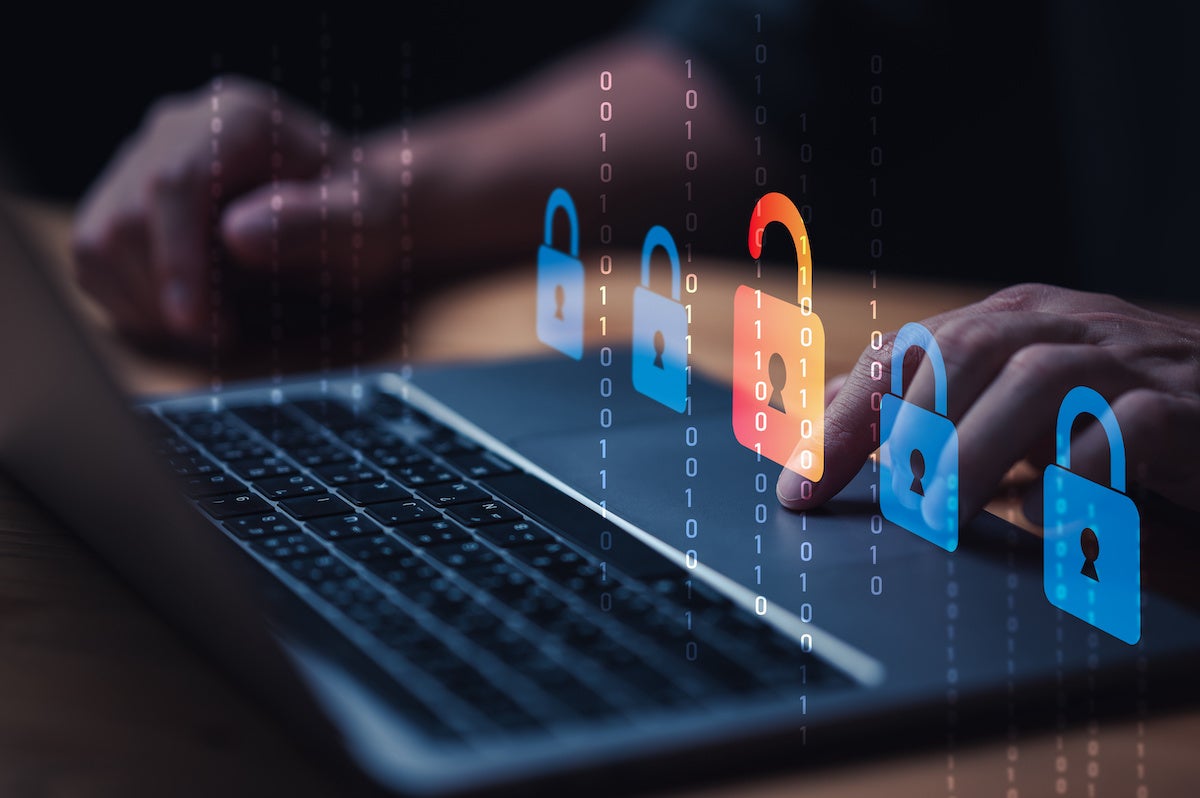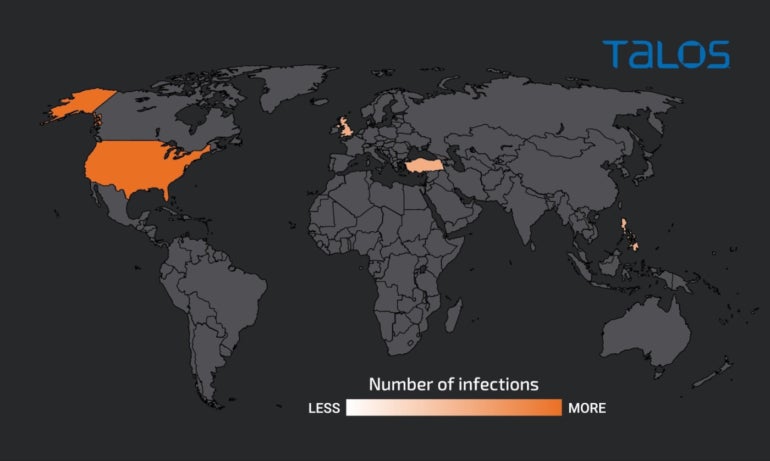- I gave my Android phone thermal vision superpowers with this accessory
- My favorite 12-in-1 electric screwdriver is the only one you'll need - and it's on sale
- This large-screen Samsung tablet left me with no iPad Pro envy - and it's up to $800 off
- This TCL Mini LED is the TV deal I recommend to most people - especially at up to $800 off
- This Android smartwatch released last year still outruns the competition - and it's on sale
Cryptocurrency users in the US hit by ransomware and Clipper malware

Learn how to protect your business and staff from the MortalKombat ransomware and Laplas Clipper malware.
A new attack campaign launched by an unknown threat actor targets the U.S. with two malware families: MortalKombat ransomware and Laplas Clipper. We detail how these malware campaigns are executed and how to keep your business safe.
Jump to:
How these cybersecurity attacks are executed
This attack campaign as described by Cisco Talos starts with a phishing email (Figure A) that impersonates CoinPayments, a legitimate cryptocurrency payment gateway. The content is very brief, describing a payment in Bitcoin that has been canceled due to a time-out problem. It seems reasonable to believe only people making transactions in Bitcoin would open the attached file, which is a ZIP archive file containing a malicious BAT loader script.
Figure A

Once executed, the loader downloads another ZIP file from a server belonging to the attackers’ infrastructure, whose content might be MortalKombat ransomware or Laplas Clipper malware (Figure B).
Figure B

What is MortalKombat ransomware?
According to Cisco Talos researcher Chetan Raghuprasad, MortalKombat ransomware was first observed in January 2023. This 32-bit Windows executable file, once executed, copies itself into the local user profile’s temporary folder before dropping an image file that will be loaded as the victims’ wallpaper (Figure C).
Figure C

The ransomware contains a huge list of file extensions it targets for encryption. Every time there is a match, the matching file is encrypted. The ransomware also checks for logical drives connected to the machine it runs on, and searches for the same file extensions through all folders recursively, encrypting more files as they are found.
All encrypted files receive a new file extension and the same ransom note file is created in every folder where files are encrypted.
Files in the recycle bin folder are having their file name changed, too, with the same file extension.
The Cisco Talos researcher found similarities between MortalKombat ransomware and a much older ransomware dubbed Xorist, which appeared in 2010 and has been widely used to create ransomware variants. A particular Alcmeter registry key string and a ClassName string X0r157 are markers of the Xorist ransomware and have been found in the code of the MortalKombat ransomware. Deeper code analysis from Talos brought high confidence that the MortalKombat ransomware belongs to the same family as Xorist.
What is Laplas Clipper malware?
The Laplas Clipper malware version Cisco Talos found was developed in the Go programming language, but previous versions have used other languages including VB.NET.
The malware embeds encrypted strings that are decrypted in the initial phase of execution of the malware. The malware copies itself on the system and establishes persistence before monitoring the users’ clipboard to look for cryptocurrency wallet addresses. Once a cryptocurrency wallet is detected in the clipboard, it is replaced by an attacker-controlled wallet sent by the C2 server.
The malware knows these cryptocurrencies: Dash, Bitcoin, Bitcoin Cash, Zcash, Litecoin, Ethereum, Binance coin, Dogecoin, Monero, Ripple, Tezos, Ronin, Tron, Cardano and Cosmos.
The malware is advertised on cybercriminals’ underground marketplaces (Figure D) and sold as a service for $59 per month, according to Cyble Research & Intelligence Labs.
Figure D

As a result of the infection, unsuspecting victims think they are making a cryptocurrency payment without trouble; in fact, they are being scammed, and their transaction amount is sent to an attacker-controlled wallet.
U.S. is the main target for this security threat
The main target for this attack campaign, as provided by Cisco Talos, is the U.S., followed by the U.K., Turkey and the Philippines (Figure E).
Figure E

While no intelligence is provided about the phishing email targets, it is reasonable to believe that the targeted emails are probably from users dealing with cryptocurrency.
How to protect your business from MortalKombat and Laplas malware
The initial infection relies on social engineering and not vulnerabilities. It is advised to raise awareness to all employees by providing them with regular security training and tips to avoid falling for social engineering-driven infections, especially via emails.
Plus, all operating systems and software should always be up to date and patched to prevent being compromised by a common vulnerability and to deploy security solutions at every level of the corporate infrastructure.
In the case of the Laplas Clipper, as it alters the content of the clipboard by replacing one cryptocurrency wallet for another, it is strongly advised to always check that the result from a copy/paste operation of a wallet is the exact same one as the initial one.
Another security tip is to make regular data backups, with backups staying offline, so that it is still possible to revert to good data when ransomware has hit the infrastructure.
Disclosure: I work for Trend Micro, but the views expressed in this article are mine.
Read next: Security awareness and training policy (TechRepublic Premium)

